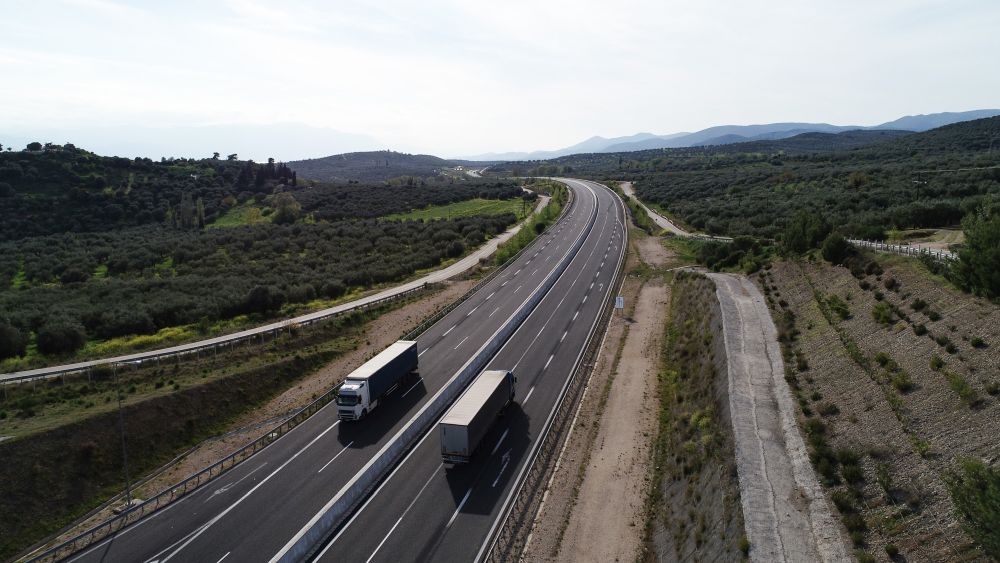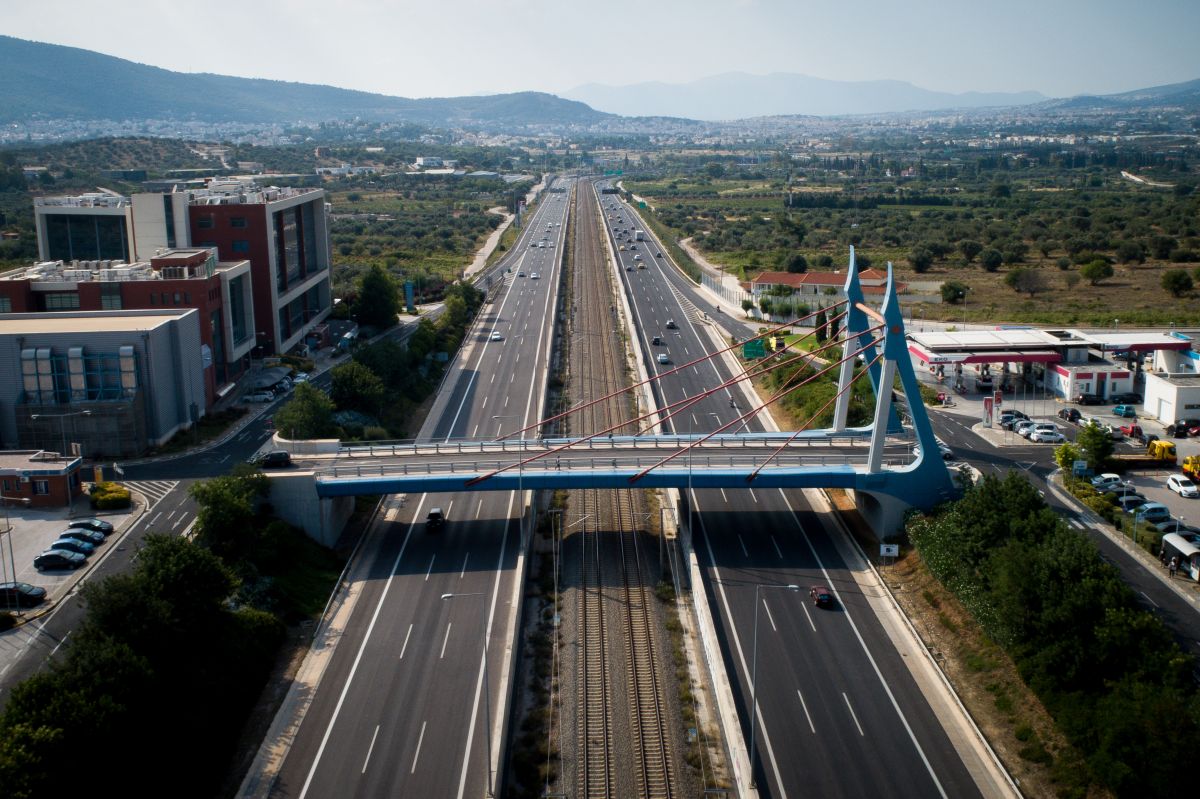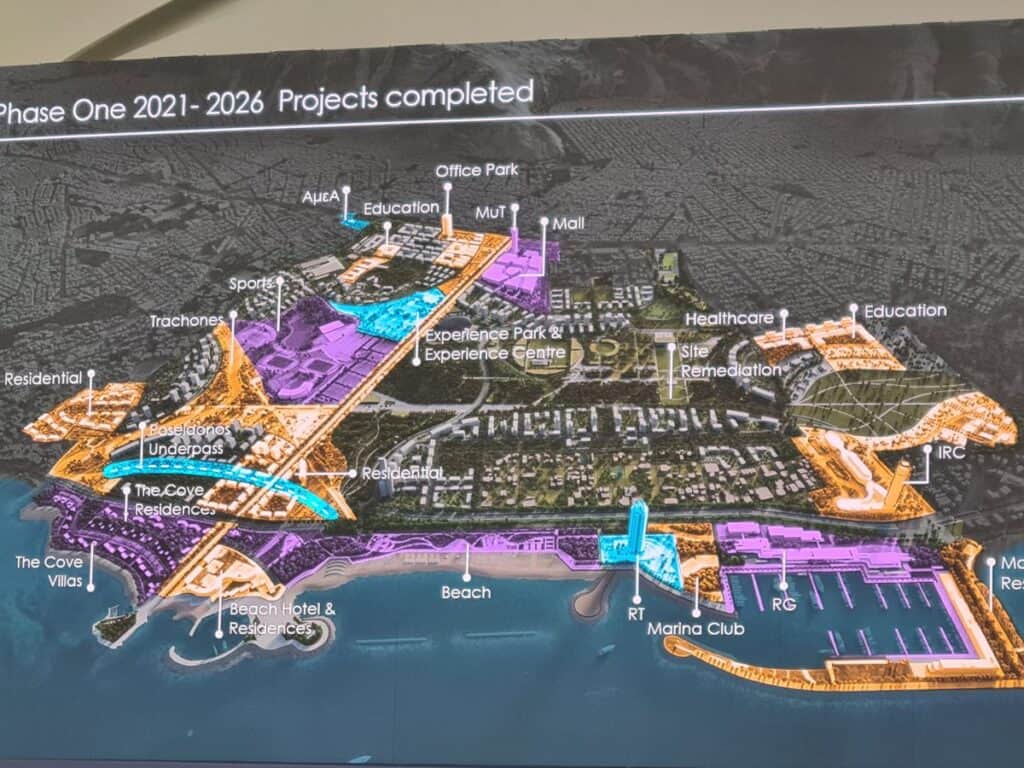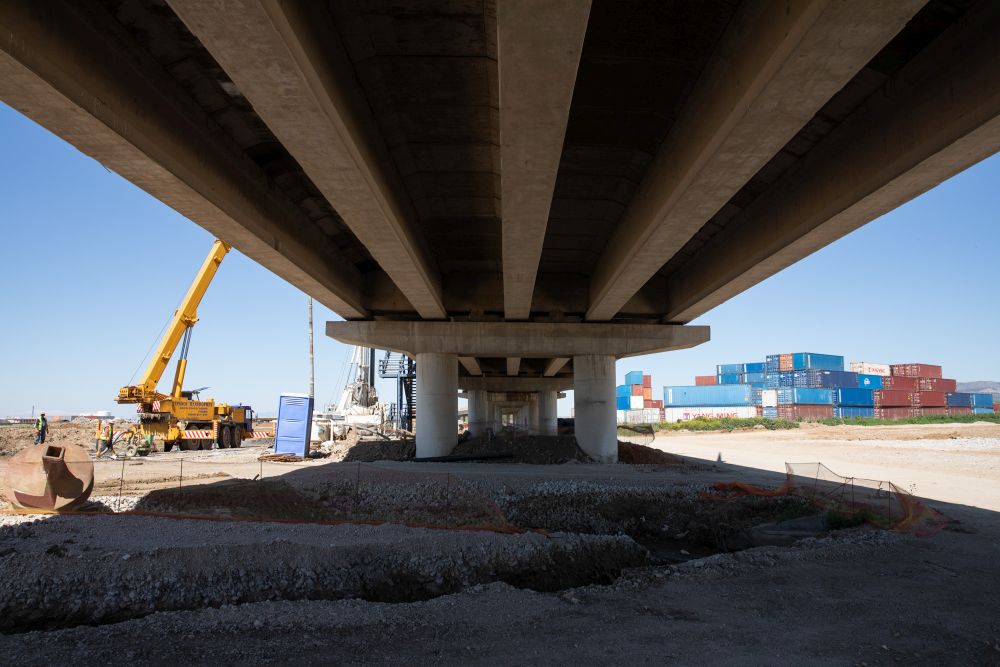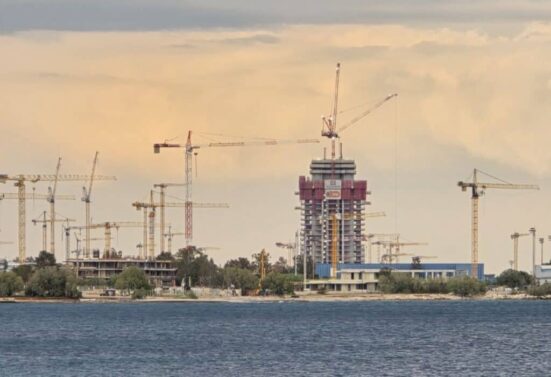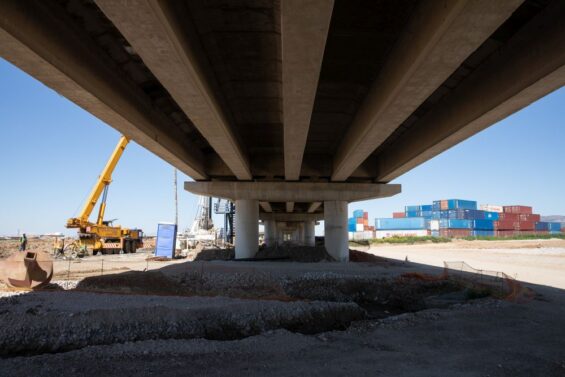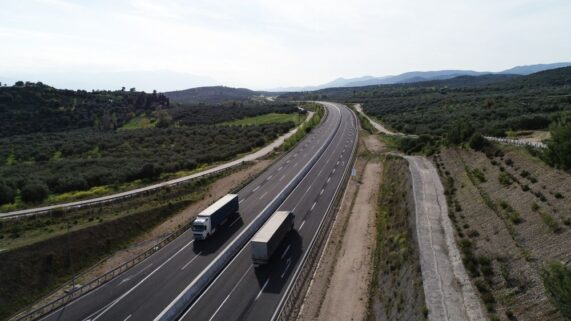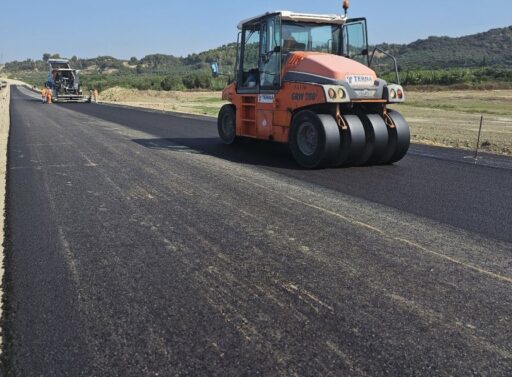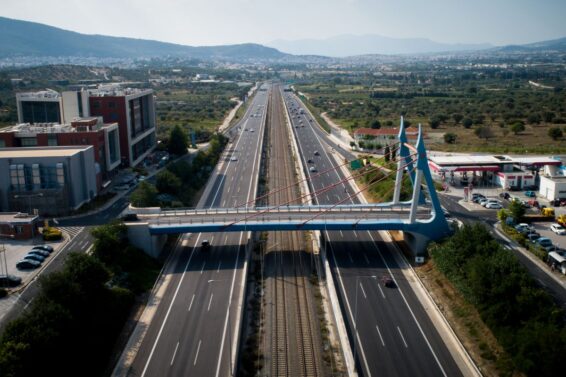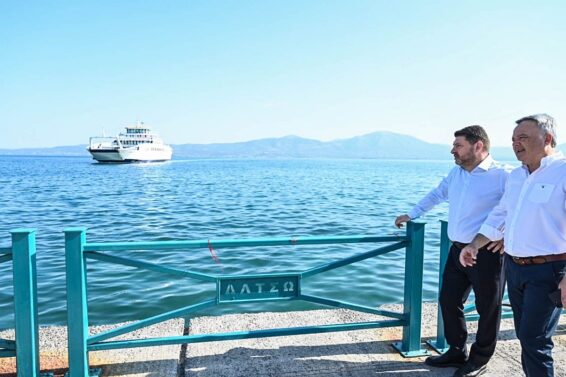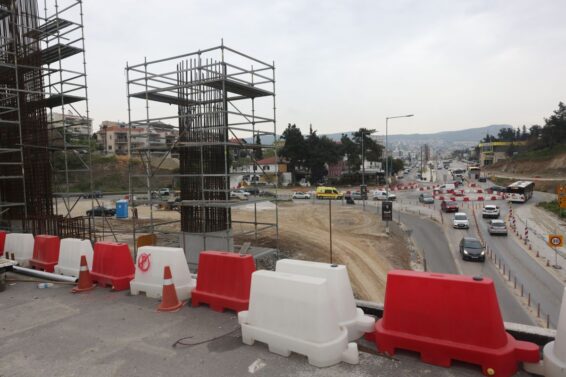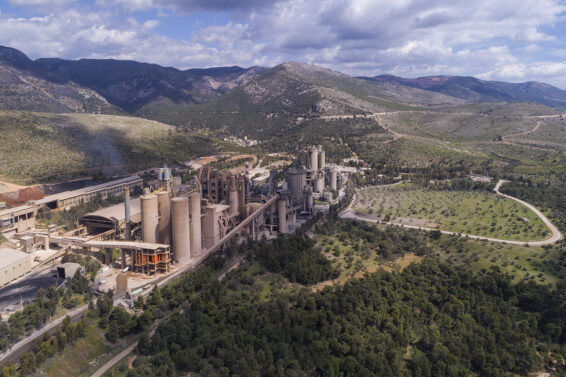Greece’s motorway network is rapidly moving toward reaching — and even surpassing — 3,000 kilometers over the next decade. Currently, the country has approximately 2,400 kilometers of fully developed motorways, of which around 2,210 kilometers are tolled.
It is considered one of the most modern road networks in Europe, as Greece was late in developing its motorways, resulting in most of them being completed relatively recently. This, however, contributed to the creation of infrastructure with modern specifications. Nearly all of these routes operate under concession agreements with the Greek State.
The Egnatia Odos, spanning 670 kilometers, along with its vertical axes: Siatista–Krystallopigi, Thessaloniki–Evzoni, and Thessaloniki–Promachonas, adding another 213 kilometers.
More specifically, today the motorway network includes:
- The Olympia Odos, in operation between Elefsina and Patras, with a length of 203 kilometers.
- The Ionia Odos, from Antirrio to Ioannina, covering 196 kilometers.
- The Nea Odos, from Metamorfosi to Skarfeia, with a length of 172.5 kilometers.
- The Moreas Motorway, connecting Corinth–Kalamata, Megalopoli–Sparta, and the Kalamata Ring Road, totaling 205 kilometers.
- The Aegean Motorway, from Raches (Fthiotida) to Kleidi (Imathia), stretching 263 kilometers.
- The Kentriki Odos, including the Skarfeia–Raches section (57 km) and the Lamia–Kalambaka section (131 km).
- The Attiki Odos, with a length of 70 kilometers.
- The Thessaloniki Ring Road, with 31.4 kilometers.
- The Rio–Antirrio Bridge.
- The Aktio–Preveza undersea tunnel.
Also featuring motorway-grade characteristics is the Thessaloniki–Kassandra axis, with a length of 95 kilometers, as well as parts of the BOAK (Northern Road Axis of Crete), including the bypasses of Chania, Rethymno, and Heraklion, along with the Heraklion–Hersonissos section, totaling approximately 40 kilometers. Additionally, the Amvrakia Odos, spanning 49 kilometers from Aktio to Amvrakia, has been fully operational since early 2024.
Major road projects under construction until 2030
What is certain is that this number (of motorway kilometers) will significantly increase in the coming months and years, as it is estimated that by 2030, over 410 kilometers of new motorways will gradually be added across various regions of the country.
The Ministry of Infrastructure and Transport, which oversees the country’s major road projects, plans to open this year the Patras–Pyrgos section of the Olympia Odos, with a total length of 75 kilometers. By the end of July, the Alissos–Pyrgos segment (65 km) will open to traffic, followed by the remaining 10 kilometers from Mintilogli to Alissos at the end of the year. With this extension, Olympia Odos will live up to its name by nearly reaching the area of Ancient Olympia, increasing its total length to almost 280 kilometers. The project is being executed in sections by TERNA, AKTOR, and AVAX.
In 2026, according to the latest estimates from Ministry of Infrastructure officials, the northern section of the E65 motorway from Kalambaka to Grevena, around 45 kilometers, will be delivered by summer. This addition will complete the E65, bringing its total length to approximately 175 kilometers.
In May 2027, the flyover of the Thessaloniki Ring Road (delivered by the contractor consortium METKA–AVAX) is expected to open to traffic. This project will fully upgrade the urban motorway and nearly double its capacity.
Gradually, from 2027 until 2030 (and possibly beyond), the Northern Road Axis of Crete (BOAK) — with a total length of 230 kilometers — will be completed. It will extend from Kissamos to Agios Nikolaos.
The first section to be completed will be Neapoli–Agios Nikolaos (contractor: AKTOR). It will be followed by the Hersonissos–Neapoli section (contractor: GEK TERNA–AKTOR GROUP). The final sections to be completed will be Chania–Heraklion and Kissamos–Chania (contractor: GEK TERNA).
Toward the end of the decade, several major road projects are expected to be delivered. These include:
- The Ionian Motorway extension by almost 70 kilometers, with the Ioannina–Kakavia section (contractor: AVAX). With this addition, the total length of the Ionian Motorway will reach nearly 270 kilometers.
- The Chalkida–Psachna Bypass (contractor: METKA), approximately 20 kilometers long, which will upgrade access to the island of Evia.
- The Bralos–Amfissa section (contractor: AVAX) and the Gravia Bypass, totaling around 30 kilometers, as part of the Lamia–Itea–Antirrio corridor.
- The Kalamata–Pylos–Methoni axis (contractor: AKTOR), around 50 kilometers long, further improving the road network of the Messinia region.
It should be noted that some of these road projects are not full motorways; the last three (Chalkida–Psachna, Bralos–Amfissa, and Kalamata–Methoni) are roads with high-speed traffic characteristics, but not built to full motorway standards.
Full speed ahead toward 3,000 kilometers of motorways in Greece
By 2030, the length of Greece’s motorway network is expected to reach approximately 2,830 kilometers. Additionally, further expansions may follow — particularly in Attica, where several extensions are under consideration. These include the Koropi–Lavrio, Spata–Rafina, Katechaki–Vouliagmenis Avenue (Ilioupoli Tunnel), and Elefsina–Oinofyta corridors. If these projects move forward, the national motorway network will surpass the 3,000-kilometer mark.
Specifically for Attica, construction groups have submitted proposals to extend Attiki Odos to new areas, such as the ports of Lavrio and Rafina, as well as the so-called Attica Bypass, which is seen as essential for relieving congestion on Kifisos Avenue, where daily traffic jams are the norm. The combined cost of these four extensions is estimated at over €2 billion.
On the other hand, some voices argue that Greece has overinvested in road infrastructure, neglecting the development of fixed-track systems, particularly the railway network. However, the advancement of one mode of transport doesn’t necessarily mean the decline of another. Multimodality in transportation is the goal, but it is evident that rail development significantly lags behind the progress seen in road infrastructure.
For more details and the complete article in Greek, click here
ΜΗΝ ΞΕΧΑΣΕΤΕ
- Ακολουθήστε το ypodomes.com στο Google News και μάθετε πρώτοι όλες τις ειδήσεις για τις υποδομές στην Ελλάδα
- Αν είστε επαγγελματίας του κλάδου, ακολουθήστε μας στο LinkedIn
- Εγγραφείτε στο Ypodomes Web TV

